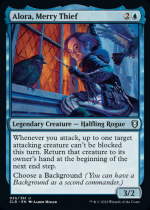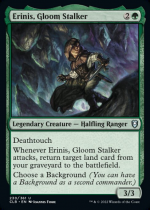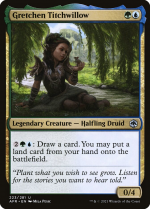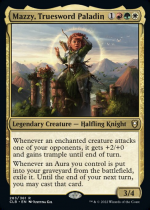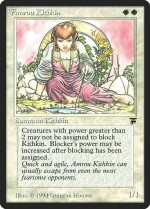Over the decades I've developed my campaign world to match the archetypes my players wanted to play. In all those years, nobody's ever played a halfling.
As a literary construct, hobbits serve a specific purpose. In The Hobbit, they are proxies for children. In The Lord of the Rings, they are proxies for farmers and other folk who were thrust into the industrialized nightmare of mass warfare. In both cases, hobbits were a positioned in contrast to the violent lifestyle of adventurers who live and die by the sword.
Which is at least in part why they're challenging to integrate into a campaign world. And yet, we have strong hobbit archetypes in Dungeons & Dragons, thanks to Dragonlance.
Part of the issue with kender is that they aren't thieves, per se, but have a child-like curiosity that causes them to "borrow" things without understanding that borrowing said things without permission is tantamount to stealing in most cultures. In essence, it results in a character who steals but doesn't admit to stealing, which can be problematic for inter-party harmony. Worse, kender have a very broad idea of what to "borrow" (which is not limited to just valuables) and have always been positioned as being offended by accusations of thievery. It sets up a scenario where either the party is very tolerant of the kender or conflict ensues. This aspect of kender has been significantly minimized in the latest draft for Unearthed Arcana.
There's also the simple matter of integrating halflings into societies where they aren't necessarily living apart. Presumably, most human campaigns have farmers; dwarves and elves occupy less civilized niches, where halflings are a working class who lives right alongside the rest of humanity in plain sight. Figuring out how to accommodate them matters a lot. Do humans just treat them like children? Would halflings want to be anywhere near a larger humanoids' dwellings as a result? Or are halflings given mythical status like fey? Or are they more like inveterate pranksters and tricksters, treating them more like gnomes? And if halflings are more like gnomes, then why have gnomes?
There are opportunities to integrate halflings into a world, but they aren't quite so easy to plop down into a setting as dwarves and elves. I still haven't quite figured out how to make them work in my campaign that doesn't feel like a one-off rather than a separate species. But I did finally find a space for gnomes, which I'll discuss in another article.
Your Turn: How have you integrated halflings into your campaign world?
So What's the Problem?
Halflings, derived from hobbits, have been a curious nod to Tolkien's influence on fantasy. While dwarves and elves have deep mythological roots, hobbits are more modern inventions. And their inclusion was very much a response to the adventurous life that the agrarian homebodies considered an aberration. In short, most hobbits didn't want to be adventurers, and Bilbo, Frodo, and the others were forever changed by their experiences, such that it was difficult for them to reintegrate when they returned home. You don't hear much about elves and dwarves having difficulty returning home after being adventurers, and for good reason. Tolkien was making a point about the human condition and the nature of war by using hobbits as proxies.As a literary construct, hobbits serve a specific purpose. In The Hobbit, they are proxies for children. In The Lord of the Rings, they are proxies for farmers and other folk who were thrust into the industrialized nightmare of mass warfare. In both cases, hobbits were a positioned in contrast to the violent lifestyle of adventurers who live and die by the sword.
Which is at least in part why they're challenging to integrate into a campaign world. And yet, we have strong hobbit archetypes in Dungeons & Dragons, thanks to Dragonlance.
Kender. Kender Are the Problem
I did know one player who loved to play kender. We never played together in a campaign, at least in part because kender are an integral part of the Dragonlance setting and we weren't playing in Dragonlance. But he would play a kender in every game he played, including in massive multiplayers like Ultima Online. And he was eye-rollingly aggravating, as he loved "borrowing" things from everyone (a trait established by Tasselhoff Burrfoot).Part of the issue with kender is that they aren't thieves, per se, but have a child-like curiosity that causes them to "borrow" things without understanding that borrowing said things without permission is tantamount to stealing in most cultures. In essence, it results in a character who steals but doesn't admit to stealing, which can be problematic for inter-party harmony. Worse, kender have a very broad idea of what to "borrow" (which is not limited to just valuables) and have always been positioned as being offended by accusations of thievery. It sets up a scenario where either the party is very tolerant of the kender or conflict ensues. This aspect of kender has been significantly minimized in the latest draft for Unearthed Arcana.
Big Heads, Little Bodies
The latest incarnation of halflings brings them back to the fun-loving roots. Their appearance is decidedly not "little children" or "overweight short people." Rather, they appear more like political cartoons of eras past, where exaggerated features were used as caricatures, adding further to their comical qualities. But this doesn't solve the outstanding problem that, for a game that is often about conflict, the original prototypes for halflings avoided it. They were heroes precisely because they were thrust into difficult situations and had to rise to the challenge. That requires significant work in a campaign to encourage a player to play a halfling character who would rather just stay home.There's also the simple matter of integrating halflings into societies where they aren't necessarily living apart. Presumably, most human campaigns have farmers; dwarves and elves occupy less civilized niches, where halflings are a working class who lives right alongside the rest of humanity in plain sight. Figuring out how to accommodate them matters a lot. Do humans just treat them like children? Would halflings want to be anywhere near a larger humanoids' dwellings as a result? Or are halflings given mythical status like fey? Or are they more like inveterate pranksters and tricksters, treating them more like gnomes? And if halflings are more like gnomes, then why have gnomes?
There are opportunities to integrate halflings into a world, but they aren't quite so easy to plop down into a setting as dwarves and elves. I still haven't quite figured out how to make them work in my campaign that doesn't feel like a one-off rather than a separate species. But I did finally find a space for gnomes, which I'll discuss in another article.
Your Turn: How have you integrated halflings into your campaign world?


